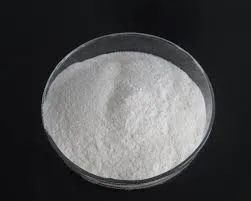
តុលា . 18, 2024 13:18 Back to list
HPMC HS Code Overview and Application in Different Industries
Understanding HPMC and Its HS Code
Hydroxypropyl Methylcellulose (HPMC) is a versatile and widely used polymer derived from cellulose, a natural polymer obtained from plant cell walls. HPMC is recognized for its unique properties that make it invaluable in various industries, including pharmaceuticals, food, cosmetics, and construction. To facilitate global trade, every product is assigned a Harmonized System (HS) Code, which is essential for customs, tariffs, and trade statistics. In this article, we will explore HPMC’s significance, its applications, and its corresponding HS code.
The Significance of HPMC
HPMC is a non-ionic cellulose ether that has been modified to enhance its solubility and functionality. One of the primary benefits of HPMC is its ability to form gels and films, providing thickening, emulsifying, and stabilizing properties. Because of these attributes, HPMC has garnered widespread approval in a number of sectors.
In the pharmaceutical industry, HPMC is commonly used as a binder, coating agent, and controlled-release agent in tablet formulations. It is essential for the stabilization of active pharmaceutical ingredients (APIs) and can help extend the release of these substances to improve therapeutic outcomes. The food industry utilizes HPMC as a food additive, where it acts as a thickener, emulsifier, and stabilizer.
In cosmetics, HPMC is prized for its ability to create a smooth texture and improve product stability, and in construction, it is often used as an additive in cement and gypsum-based products for enhanced workability and performance. These varied applications make HPMC an integral component across multiple fields.
hpmc hs code

HPMC’s HS Code
The Harmonized System Code (HS Code) plays a crucial role in classifying products for international shipping and trade. For HPMC, the HS Code is generally classified under chapter 39, which pertains to plastics and articles thereof. The specific HS Code for Hydroxypropyl Methylcellulose is 3912.31, which corresponds to cellulose ethers that are less than 75% by weight of the polymer. Recognizing the HS Code for HPMC is vital for exporters and importers as it ensures compliance with customs regulations and helps in determining the duties and taxes applicable to the products.
Importance of Correct HS Code Classification
Accurate classification of HPMC with its correct HS Code is essential for manufacturers and traders involved in global commerce. Misclassification can lead to significant delays, fines, or additional duties. Furthermore, understanding the HS Code system can help businesses navigate international regulations more effectively, facilitate smoother transactions, and avoid potential legal issues.
Conclusion
Hydroxypropyl Methylcellulose is a prominent polymer with a wide array of applications, making it an essential material in various industries. Understanding the properties and applications of HPMC, along with its appropriate HS Code (3912.31), is crucial for businesses engaged in international trade. By correctly classifying HPMC under the Harmonized System, companies can enhance their operational efficiency, ensure compliance with global trade regulations, and contribute to smoother business interactions across borders. As markets continue to globalize, recognizing and adhering to these classifications will remain a critical aspect of international business strategies.
-
Versatile Hpmc Uses in Different Industries
NewsJun.19,2025
-
Redispersible Powder's Role in Enhancing Durability of Construction Products
NewsJun.19,2025
-
Hydroxyethyl Cellulose Applications Driving Green Industrial Processes
NewsJun.19,2025
-
Exploring Different Redispersible Polymer Powder
NewsJun.19,2025
-
Choosing the Right Mortar Bonding Agent
NewsJun.19,2025
-
Applications and Significance of China Hpmc in Modern Industries
NewsJun.19,2025







